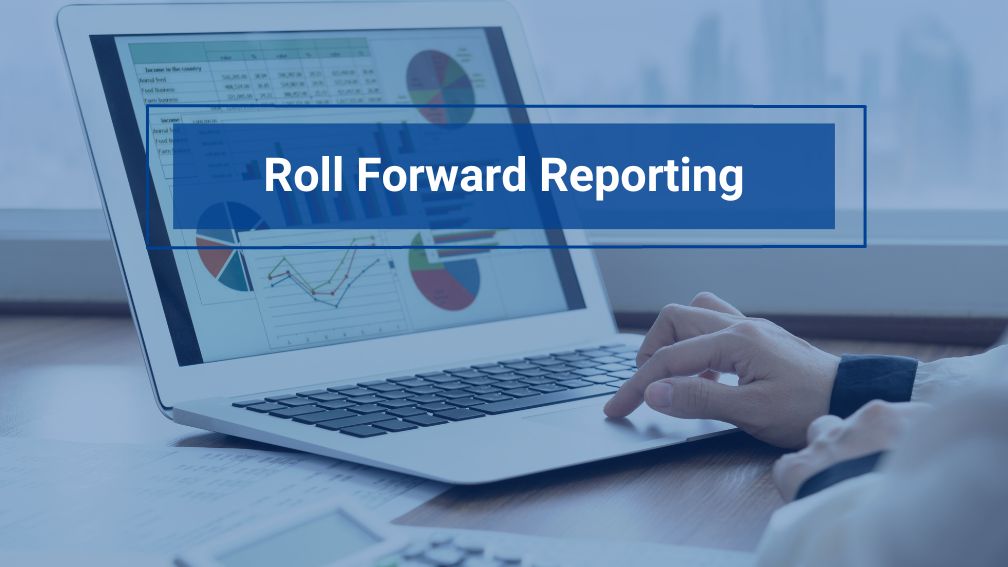Lease Accounting: Roll Forward Reporting
Roll forward reporting outlines lease financial increases or decreases on the balance sheet between reporting periods detailing changes to the ROU asset and lease liability.
With the ASC 842 lease accounting standards, balance sheet transparency is a must. Auditors expect clarity and a reporting trail for all decisions made as it relates to your lease portfolio. Roll forward reporting is one of those disclosures that give your team peace of mind during your audit.
What is Roll Forward Reporting?
Roll forward reporting provides a reconciliation of the beginning and ending balances of lease assets and liabilities over a reporting period. It tracks all changes that have occurred related to leases, including new leases, terminations, remeasurements, payments, interest accruals, impairments, and amortization.
The roll forward starts with the beginning lease asset and liability balances on the balance sheet. It then lists out all lease-related activities in the current reporting period that impact those account balances. These activities are grouped into categories such as additions, terminations, payments, interest, amortization, etc. Finally, it totals all the activity to arrive at the ending lease asset and liability balances.
The key activities in a typical roll forward report include:
- Beginning lease asset and liability balances
- Additions for new leases
- Reductions for lease terminations
- Lease payments reducing liability
- Interest expense increasing liability
- Amortization expense reducing asset
- Impairments reducing asset
- Remeasurements adjusting asset and liability
- Ending lease asset and liability balances
Advantages of Roll Forward Reporting?
There are several important benefits that make roll forward reporting a critical component of lease accounting under ASC 842:
- Enhanced transparency – Provides clear visibility into changes and trends in lease balances over time.
- Supports auditing – Detailed breakout of activity aids auditors in reviewing leases.
- Accuracy – Ensures ending balances tie out properly with comprehensive reconciliation.
- Simplifies analysis – Financial statement users can quickly analyze leasing activity.
- Tracks decisions – Creates an audit trail documenting lease accounting decisions.
- Illustrates impacts – Shows how events like new leases, terminations, modifications, etc. impact balances.
- Facilitates forecasting – Supports projecting future lease asset and liability balances.
Overall, roll forward reporting improves the quality, transparency, auditability and usefulness of lease accounting and disclosures under the new ASC 842 standards.
Roll Forward Reporting Use Cases
Under ASC 842, ongoing lease visibility is necessary to understand your lease accounting and reporting needs not for just your current period but also the next periods. Roll forward reporting provides invaluable insights into lease trends and impacts over time. It enables critical analytical capabilities for financial reporting, auditing, forecasting, and operational management. Accountants use roll forward reporting to gain a clear understanding of cash position, depreciation, appreciation and retained earnings across their portfolio .Roll forward reporting helps tell the leasing story in many common situations:
- Quarterly reporting – Reconcile lease balances from first quarter to second quarter.
- Annual reporting – Track full year leasing activity from January 1st to December 31st.
- Audits – Provide auditors with a clear reconciliation of balances from one period to the next.
- Portfolio changes – Illustrate impact of major lease terminations, new leases, modifications, impairments.
- Accounting research – Assist in researching balance changes when something looks unusual.
- Process improvements – Identify opportunities to enhance lease accounting processes and controls.
- Training – Educate staff on proper application of ASC 842 by walking through changes.
- Forecasting – Enable better forecasts of future lease expense and cash flows.
Best Practices for Roll Forward Reporting
Here are some key best practices companies should keep in mind:
- Standard methodology – Establish a standard template for roll forward reporting.
- Timely preparation – Complete the roll forward early in reporting cycle.
- Review controls – Perform robust review of report for accuracy and completeness.
- Drill down detail – Include adequate supporting information on significant activity.
- Tie to financials – Ensure ending balances tie to general ledger and financial statements.
- Audit coordination – Align report content with auditor requests.
- Retain documentation – Keep support for all amounts and decisions reflected.
Roll Forward Reporting Simplifies ASC 842 Compliance
The new lease accounting standard ASC 842 requires significant effort and complex judgments. Roll forward reporting provides an invaluable tool to track lease balances over time and document compliance activities.
By implementing strong roll forward reporting capabilities, companies can effectively tell their leasing story, provide transparency for investors, and simplify audits for ASC 842 adherence. Leasing may be complicated, but your reporting does not have to be.
FAQ’s
What are the key sections of a roll forward report?
The key sections are beginning balances, activity categorized by type such as new leases, terminations, adjustments, payments, interest and amortization, and ending balances. Supporting detail and documentation should also be included.
How often should you prepare the roll forward?
The roll forward should be prepared at least quarterly. Companies may opt to prepare it monthly for greater transparency and accuracy.
What needs to tie out in the roll forward report?
The ending lease asset and liability balances must tie to the general ledger and financial statements. The beginning balances must equal the prior period ending balances.
Can you perform a roll forward for prior periods?
Yes, companies can perform retroactive roll forwards to facilitate analysis of trends, audit support, and error corrections if needed.
Who are the primary audiences for the roll forward?
The primary audiences are management, financial reporting team, auditors, and accounting oversight bodies. The report facilitates review and assurance over lease accounting.
Lease Accounting Resources
Check out our resource hub. We have the templates, spreadsheets, and calculators to help you manage entire lease lifecycle.
